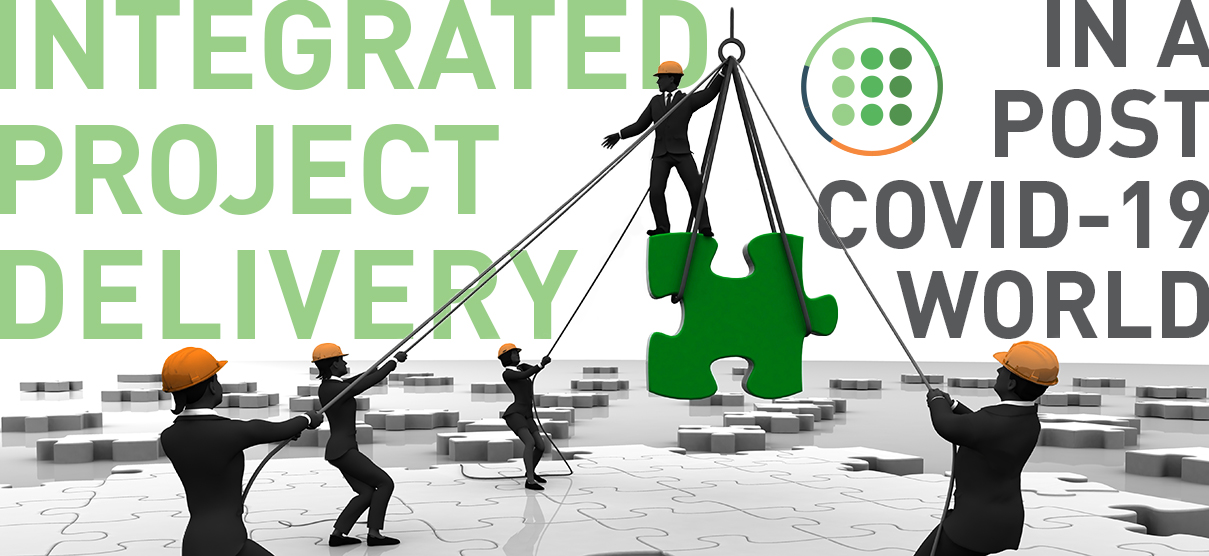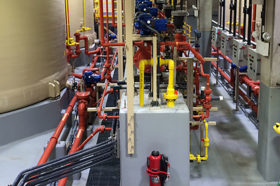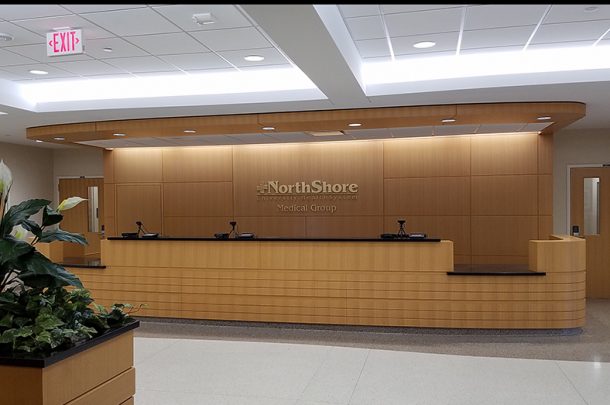
While traditional project delivery methods are still used regularly, we are seeing an increase in teaming dynamics that optimize project results. Problems in contemporary construction include ballooning budgets, scheduling delays, and competing interests among project partners. Owners are leaving value on the table with traditional project delivery methods as projects are delivered over budget or behind schedule. However, the introduction of the Integrated Project Delivery (IPD) method has begun to revolutionize the way we deliver projects in the AEC industry. The advantages of this contract vehicle are even more important now as teams try to bring critical projects to completion that are delayed or postponed due to COVID-19, or for projects that were not even contemplated before the pandemic hit in early 2020.
While you are more likely to hear about IPD being used in high-profile, mega-projects, there is a larger number of small projects using this contract vehicle. In either case, it’s understandable why design and construction experts see the advantages of IPD for projects (regardless of size) where a high level of transparency benefits the overall outcome of a project. This article outlines the key components needed to leverage the IPD approach and why it’s worth considering for your next project.
First, it’s important to define IPD and understand why it’s beneficial. According to the American Institute of Architects, Integrated Project Delivery is “a project delivery approach that integrates people, systems, business structures and practices into a process that collaboratively harnesses the talents and insights of all participants to optimize project results, increase value to the owner, reduce waste, and maximize efficiency through all phases of design, fabrication, and construction.” Simply put, IPD allows the different players to work together as a true team working towards the common goal of a successful project, and everyone shares in its success or failure.
The IPD contract structure, also referred to as Lean Construction, can be applied to a variety of arrangements and teams, often including members beyond the basic three: owner, architect, and contractor. The most successful contracts include major engineering consultants and critical trade contractors as well; depending on the project these could include masonry, HVAC, and electrical subcontractors. In all cases, integrated projects are uniquely distinguished by highly effective collaboration among the owner, architect, engineer, and prime constructor, commencing at the early design stage and continuing through to project handover.
IPD leverages early contributions of knowledge and expertise through true team collaboration, allowing all team members to realize their highest potential while expanding the value they provide throughout the project lifecycle. At the core of an integrated project are collaborative, integrated, and productive teams composed of all the key project participants. These teams are guided by principles of trust, transparent processes, effective collaboration, open information sharing, team success tied to project success, shared risk and reward, value-based decision making, and utilization of full technological capabilities and support. With some of the new and unique challenges brought on by the 2020 pandemic, you can see that this knowledge-sharing offers an opportunity to design, build, and operate as efficiently as possible.
Primera has experienced a great deal of success with the IPD delivery method. In one instance, the Lean Construction process allowed the project team to complete a 25,000-square-foot medical office building (MOB) within five-and-a-half months. The tight design and construction schedule included a lead time of 14-weeks for HVAC equipment procurement. The collaboration of the team and real-time problem solving contributed to the success of this project. The abbreviated schedule allowed for a quick turnaround of tenant space and the commencement of lease payments for the owner.
So how does this IPD process benefit owners, architects, contractors, and the whole team during these times of uncertainty in and current-and-post-COVID-19 world? First, the advantage of a collaborative design team can help to address potential supply chain issues, which will continue to hurt the construction industry in the near term, and the potential shortage of specialty contractors. With potential interruptions along many points in the supply chain, having the constant communication – the hallmark of IPD – will help the team pivot if critical materials are unavailable or delayed or subcontractors are unable to meet their schedule commitments. There is also a need for more stringent jobsite safety standards – not necessarily means & methods of the actual construction, but rather thinking though phasing, scheduling, employee health & safety, entry into jobs sites, etc. The collective team’s knowledge sharing will prove to be an asset when developing these new standards.
While IPD doesn’t remove unforeseen conditions, issues with deliveries/supply chain, or problems during construction, it does allow the whole team to come up with a solution together and use the shared pool of subject-matter experts to address them in real time, as they occur. It is worth noting that even though the key contributors are part of the IPD contract, there are still traditional contract relationships on these projects with both professional service firms (structural and civil engineers, and specialists like acoustical or AV/IT) and subcontractors (drywall, flooring, etc.).
As projects start again in a more restrictive lending environment, another unique advantage that benefits all parties involved is the control of cash flow on the project. For example, on several Primera IPD projects the team decided to pre-fund general contractor project management costs and overhead, which is confirmed at each month’s closeout. This allows for real-time funding for all parties, enabling the owner to balance cash flows. This is essential for smaller projects and reduces payment to 15 days or less, rather than upwards of 45 days. Traditional consultants and subcontractors also reap the benefit of this improved cash flow/payment process.
Now that you understand the process and benefits of IPD contracts and Lean Construction processes, it is worthwhile to evaluate your next project (and its contract vehicle) to see if IPD would offer added benefits. Especially now as we face a changed design/construction landscape and significant uncertainty, allowing teams to work towards a mutual shared goal will provide better solutions, a greater ability to pivot, and the chance to maintain and accelerate schedules.
References:
AIA Integrated Project Design – https://www.aia.org/resources/64146-integratedproject-delivery-a-guide
Lean Construction Institute – leanconstruction.org







 10 Strategies for Resilient Design
10 Strategies for Resilient Design 







